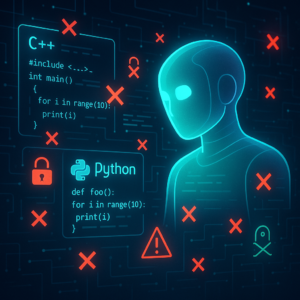Making AI Safer: How PT-ALIGN Improves Large Language Models Without Extra Human Effort

Making AI Safer: How PT-ALIGN Improves Large Language Models Without Extra Human Effort
Introduction
From chatbots to advanced research assistants, AI-driven text generators—known as large language models (LLMs)—are becoming an integral part of our daily digital experience. But as these AI models get smarter, they also need to become safer. Left unchecked, they might generate harmful content, spread misinformation, or fall prey to “jailbreak” hacks that bypass their content restrictions.
Traditionally, aligning AI models with human values requires massive amounts of human-annotated training data. This process is slow, expensive, and still not foolproof. But what if AI could learn safety more efficiently—with minimal human supervision?
That’s where PT-ALIGN, a novel self-alignment technique for AI safety, comes into play. This approach refines both harmless (safe) and toxic (harmful) data samples to train LLMs, ensuring they generate helpful responses while avoiding dangerous ones. It does all this with fewer than 50 human-labeled examples, making AI safety training more scalable and efficient.
Let’s dive into how PT-ALIGN works and why it could change the way we train AI for responsible, real-world use.
The AI Safety Problem: Why Current Methods Fall Short
Modern AI models, like ChatGPT and LLaMA, are trained using two main techniques:
- Supervised Fine-Tuning (SFT): AI learns from human-provided question-answer pairs to generate desirable responses.
- Reinforcement Learning from Human Feedback (RLHF): AI fine-tunes itself based on human approvals or rejections of specific responses.
While effective, both methods heavily rely on human-labeled data, making them slow, costly, and somewhat inconsistent. Worse, many AI models filter out toxic samples instead of using them for better safety learning. The result? AI that isn’t fully prepared to recognize and reject harmful prompts effectively.
Imagine trying to teach a child to avoid bad behavior without showing them what bad behavior looks like. It’s tricky. That’s the problem PT-ALIGN aims to solve.
PT-ALIGN: Teaching AI Through Contrastive Learning
Instead of relying solely on human-created safe responses, PT-ALIGN takes an unconventional approach:
- It generates both safe and toxic responses for the same question. This helps the AI clearly distinguish between helpful and harmful outputs.
- It minimizes human supervision, using LLM-generated training data. Only about 50 human-labeled samples are needed to steer the process.
- It employs dual training techniques:
- Maximum Likelihood Estimation (MLE): Encourages AI to generate safe content.
- Fine-Grained Unlikelihood Training (UT): Actively discourages AI from producing harmful text.
This dual approach makes PT-ALIGN a game-changer—it not only strengthens AI safety but does so efficiently, preserving the model’s helpfulness.
Breaking PT-ALIGN Down: How It Works
1. Generating Polarized Training Data
Instead of feeding AI only “good” responses, PT-ALIGN teaches it using polarized pairs:
- Harmless Response: A carefully crafted, safe answer
- Toxic Response: A deliberately harmful response generated within a controlled environment
By exposing AI to both extremes, it learns to naturally avoid unsafe text without degrading its ability to generate useful answers.
2. Self-Generating Safety Rules
Rather than relying entirely on human moderation, PT-ALIGN lets AI develop self-constraints—rules about what it can and cannot generate. This is done by providing the AI with seed examples of safe behavior, allowing it to expand on them intelligently.
Think of it like teaching kids self-discipline. Instead of just telling a child not to touch a hot stove, you help them understand why it’s dangerous. That deeper understanding makes PT-ALIGN-trained AI more resistant to harmful input prompts.
3. Dual Training for Maximum Safety & Helpfulness
PT-ALIGN applies two loss functions in training:
- Maximum Likelihood Estimation (MLE): Pushes AI toward producing safe responses.
- Fine-Grained Unlikelihood Training (UT): Deters the AI from generating toxic content even at the token (word) level.
This ensures that the AI doesn’t just “memorize” safe patterns—it actively learns how to avoid bad ones.
Does PT-ALIGN Actually Work? (Spoiler: Yes, It Does!)
Researchers tested PT-ALIGN on 9 popular open-source AI models, including LLaMA, Alpaca, and Vicuna. The results?
- Higher Safety Scores: AI models trained with PT-ALIGN had over 90% accuracy in avoiding harmful responses.
- Minimal Helpfulness Loss: Unlike traditional safety training, PT-ALIGN didn’t make AI models dumber—they remained just as useful!
- Better Resistance to Jailbreak Attempts: PT-ALIGN aligned models resisted hacking techniques up to 10x better than standard models.
In other words, AI trained with PT-ALIGN is both smarter and safer.
Why This Matters for AI’s Future
With AI becoming an everyday tool, ensuring safety without sacrificing performance is a top priority. PT-ALIGN’s innovative method offers key benefits:
- Less Human Effort: AI can refine its own training data, eliminating the need for large-scale manual dataset curation.
- Better Defense Against AI Abuse: By learning from real toxic examples, the model becomes much harder to trick into generating harmful content.
- Scalability Across AI Models: PT-ALIGN significantly enhances safety even for smaller AI models—meaning safer AI for more applications.
This approach could help organizations deploy more responsible AI systems without the burdensome cost of extensive human training input.
Key Takeaways
- AI Needs Better Safety Alignment – Current methods heavily rely on human-labeled training sets, which are time-consuming and expensive.
- PT-ALIGN Makes AI Smarter & Safer – It trains models using both safe and toxic samples, allowing them to understand and reject harmful patterns.
- AI Learns Its Own Safety Rules – Instead of blindly following predefined instructions, PT-ALIGN lets AI generate and refine its own ethical boundaries.
- Minimal Human Supervision Needed – With fewer than 50 human-labeled examples, PT-ALIGN achieves impressive safety improvements across multiple AI models.
- Resists Jailbreak Attacks – AI models trained with PT-ALIGN are significantly harder to manipulate into generating harmful content.
What You Can Do
If you’re an AI researcher or developer, consider experimenting with PT-ALIGN’s principles in your own safety alignment efforts. For AI users, understanding how models learn safety can help refine your prompting techniques to get more reliable and ethical responses.
The future of AI isn’t just about making it smarter—it’s about making it responsibly intelligent. And PT-ALIGN could be a big step in the right direction.
By revolutionizing AI’s approach to learning safety, PT-ALIGN pushes us closer to a world where AI can be trusted, ethical, and independently responsible.
What do you think? Can AI safety be fully automated? Leave your thoughts in the comments below! 🚀
If you are looking to improve your prompting skills and haven’t already, check out our free Advanced Prompt Engineering course.
This blog post is based on the research article “Refining Positive and Toxic Samples for Dual Safety Self-Alignment of LLMs with Minimal Human Interventions” by Authors: Jingxin Xu, Guoshun Nan, Sheng Guan, Sicong Leng, Yilian Liu, Zixiao Wang, Yuyang Ma, Zhili Zhou, Yanzhao Hou, Xiaofeng Tao. You can find the original article here.




